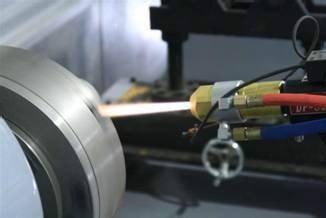There are two methods for solar power generation, one is the photothermal-electric conversion method, and the other is the direct conversion of photoelectricity.
(1) The photothermal energy conversion method uses heat generated by solar radiation to generate electricity. Generally, the solar collector converts the absorbed heat into steam of the working fluid, and then drives the steam turbine to generate electricity. The former process is the process of converting light into heat. The latter is thermal motion, just like traditional heat generation, thermal motion is finally converted into electrical energy. The disadvantages of solar thermal power generation are low efficiency and high cost. Its estimated investment is at least 5 to 10 times that of traditional thermal power plants.

(2) The method of converting light energy into electrical energy. This method uses the photoelectric effect to directly convert solar radiation energy into electrical energy. It is the basic equipment that converts light energy into electrical energy. Electricity is solar cells. A solar cell is a device that directly converts sunlight energy into electrical energy due to the photoelectric effect. It is a semiconductor photodiode. When the sun shines on the photodiode, the photodiode converts the photoelectric energy of the sun into electrical energy to generate electricity. When multiple batteries are connected in series or in parallel, a square array of relatively large output power batteries can be formed. Solar cells are a promising new power source with three main advantages: timelessness, cleanliness and flexibility. The solar battery has a long life. As long as there is sunlight, solar cells are a one-time investment and long-term use; compared with thermal power generation, solar cells will not pollute the environment.
Principle, photoelectric effect: Assuming that light emits light on the solar cell and receives light at the interface, photons with sufficient energy can excite electrons generated by the covalent bonds in the solar cell, thereby generating P-type silicon and N-type silicon holes to electronic. Before recombination, the electrons and holes near the interface will be separated from each other by the electric field of the space charge. Electrons move to the positively charged area N, and holes move to the negatively charged P area. The charge passing through the interface layer will generate an externally measurable voltage between the area P and the area N. At this point, electrodes can be added to both sides of the silicon wafer and connected to a voltmeter. For crystalline silicon solar cells, the typical value of the open circuit voltage is 0.5 to 0.6V. The more electron-hole pairs generated on the optically isolated layer, the greater the current. The more light energy received, the larger the interface layer, which means that the larger the cell area, the greater the current formed in the solar cell.





